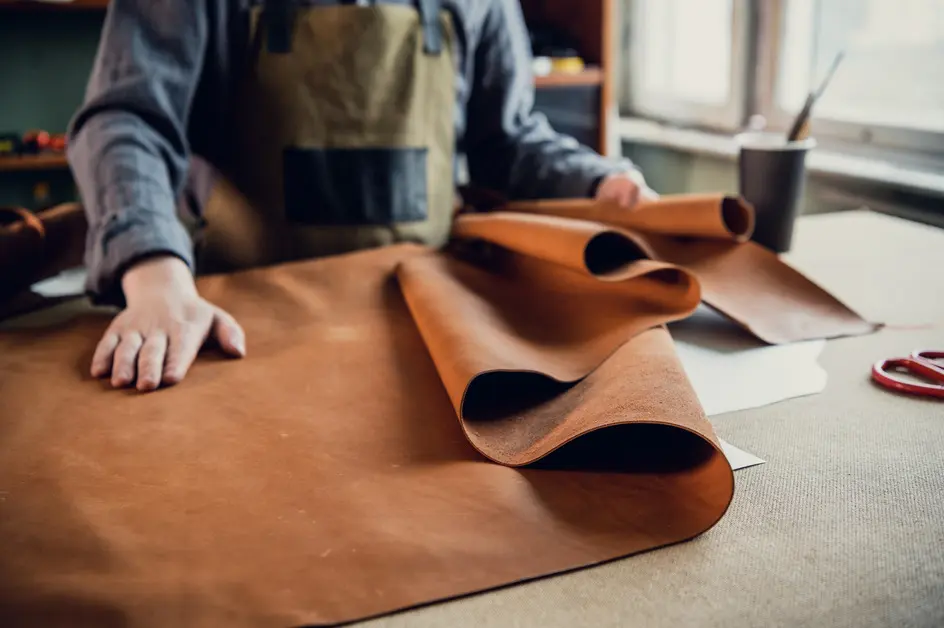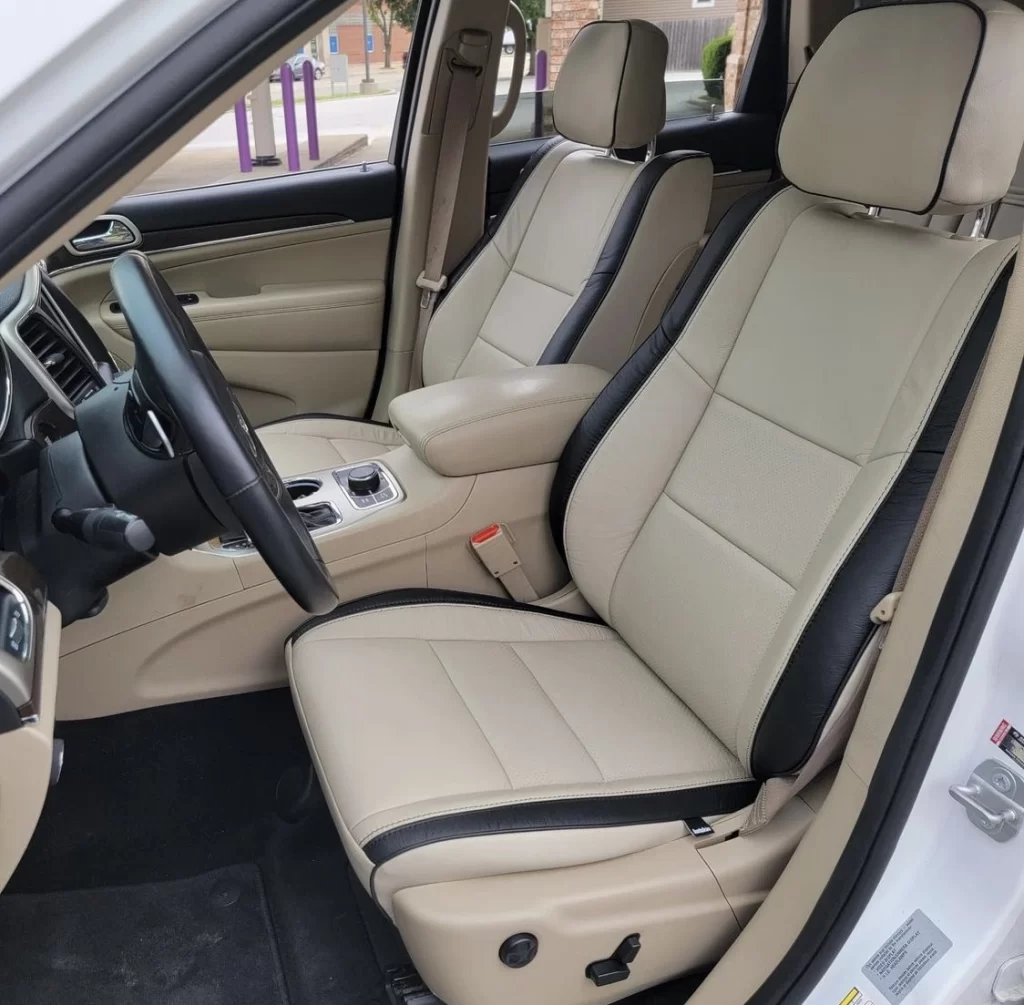Leatherette vs. Leather | What’s Best for Automotive Upholstery?
Exploring Car Interior Material Options
When deciding on the best material for your car seats, you have plenty of choices. While cloth seats are standard in many vehicles, many drivers prefer the comfort and elegance of genuine leather seat covers. The material and colors you select ultimately come down to personal preference, but leather offers distinct advantages, providing your vehicle with a luxurious and upgraded appearance with your luxury leather seat covers. As you explore your interior options, you might encounter materials labeled as “leatherette.” This can be confusing—Is it real leather? Is it just plastic? Why not simply call it leather? Keep reading to discover more about this material!

Understanding Leatherette | & Its Role in Automotive Upholstery
When it comes to automotive upholstery, choosing the right material is crucial. Among the popular options are leather and leatherette. While both materials offer unique benefits, they cater to different needs and preferences. In this comprehensive guide, we’ll explore what leatherette is, how it differs from genuine leather, and why it’s commonly used in automotive interiors. We’ll also discuss whether it’s reliable to use alongside leather in leather seat covers and other applications
Leatherette, also known as faux leather, synthetic leather, or vegan leather, is a material designed to mimic the appearance and texture of genuine leather. Unlike leather, which is derived from animal hides, leatherette is typically made from a base fabric, often polyester, that is coated with a layer of PVC (polyvinyl chloride) or polyurethane (PU). This coating gives leatherette its leather-like look and feel.
Leatherette has gained popularity in various industries, including fashion, furniture, and automotive, due to its affordability, ease of maintenance, and versatility. It offers a stylish and durable alternative to genuine leather, making it a go-to choice for those who want the aesthetic of leather without the cost or ethical concerns associated with animal products.
How Is Leatherette Different from Leather?
While leatherette and leather may look similar at first glance, there are several key differences between the two materials:
1. Origin and Production
- Leather: Genuine leather is a natural material made from the hides of animals, primarily cows. The process of transforming raw hides into finished leather involves several stages, including tanning, dyeing, and finishing. The result is a material that is durable, breathable, and unique, with each hide featuring its own distinct grain pattern.
- Leatherette: Leatherette, on the other hand, is a synthetic material made from plastic-based components. It is produced in a factory setting, where the base fabric is coated with PVC or PU to create a leather-like surface. Unlike leather, leatherette does not have natural variations in texture or appearance, which means it offers a more uniform look.
2. Cost
- Leather: Leather is generally more expensive than leatherette due to the costs associated with sourcing, processing, and finishing animal hides. The price of leather can also vary depending on the type, quality, and brand.
- Leatherette: Leatherette is a more budget-friendly option, making it accessible to a wider range of consumers. Its lower cost is one of the main reasons it’s popular in industries where affordability is a key consideration, such as automotive upholstery.
3. Durability
- Leather: Leather is known for its durability and ability to develop a unique patina over time. With proper care, leather can last for decades, making it a long-term investment. However, leather can be sensitive to moisture, heat, and sunlight, which can cause it to crack, fade, or discolor if not properly maintained.
- Leatherette: Leatherette is highly durable and resistant to many of the elements that can damage leather. It is water-resistant, stain-resistant, and less likely to fade in sunlight. However, leatherette does not develop a patina and may not age as gracefully as genuine leather. Over time, the synthetic surface may crack or peel, especially if exposed to extreme conditions.
4. Comfort and Breathability
- Leather: Leather is a breathable material that adapts to temperature changes, making it comfortable in both hot and cold weather, specially when used in a leather seat cover. Its natural fibers allow air to circulate, preventing the material from becoming too hot or sticky.
- Leatherette: Leatherette, being a synthetic material, is less breathable than leather. This can lead to discomfort in hot weather, as the material may trap heat and cause sweating. However, advancements in technology have led to the development of more breathable leatherette options that offer improved comfort.
5. Environmental and Ethical Considerations
- Leather: The production of leather for making leather seat cover, raises ethical concerns due to the use of animal hides. Additionally, the tanning process can have a significant environmental impact, particularly if harmful chemicals are used.
- Leatherette: Leatherette is often considered a more ethical and environmentally friendly option since it does not involve animal products. However, the production of leatherette still has environmental implications, particularly if it involves the use of PVC, which can release harmful chemicals during manufacturing and disposal.

Why Is Leatherette Used in Automotive Upholstery?
Leatherette is widely used in automotive upholstery for several reasons. Its affordability, durability, and ease of maintenance make it an attractive option for both manufacturers and consumers. Here’s why leatherette is a popular choice for car interiors:
- Affordability
- Ease of Maintenance
- Durability & Aesthetic Appeal
- Environmental and Ethical Benefits
Is Leatherette Reliable to Use Alongside Leather?
When it comes to combining leather and leatherette in leather car seat covers and automotive interiors, the two materials can complement each other well. Here’s how leatherette can be reliably used alongside leather:
1. Cost-Effective Customization
Using both materials in leather car seat covers, allows for cost-effective customization of car interiors. For example, leather might be used on high-touch areas such as the seat cushions and backrests, while leatherette could be used on the sides and backs of the seats. This approach provides the luxurious feel of leather in key areas while keeping costs down with leatherette in less prominent spots.
2. Consistent Appearance
Leatherette is designed to closely mimic the look and feel of leather, making it difficult to distinguish between the two materials when used together. This consistency in appearance ensures that the interior maintains a cohesive and polished look, even when mixing materials.
3. Durability and Maintenance
Using leatherette in areas that are prone to spills, stains, or heavy wear can enhance the overall durability of the interior. Leatherette’s water-resistant and stain-resistant properties make it a practical choice for seat covers, especially in vehicles used by families or for work purposes.
4. Versatile Design Options
When designing custom leather seat covers, leatherette offers a wide range of color and texture options that can be paired with leather to create a unique and personalized interior. This versatility allows for creative combinations that reflect the owner’s style and preferences.
5. Ethical Considerations
For consumers who want to incorporate leather into their car’s interior but are concerned about the ethical implications, using leatherette alongside leather can strike a balance. This approach allows for the use of some genuine leather while minimizing the overall reliance on animal products.
Leatherette is a versatile and practical material that has earned its place in the automotive industry. Its affordability, durability, and ease of maintenance make it a popular choice for car interiors, particularly in leather seat covers. While it differs from genuine leather in several ways, leatherette offers a reliable and attractive alternative that can be used alongside leather to create stylish and functional car interiors.
For those interested in leather car seat covers, leatherette provides a range of design possibilities that cater to both aesthetic and practical needs. Whether used on its own or in combination with leather, leatherette is a material that delivers both value and performance, making it a smart choice for automotive upholstery
